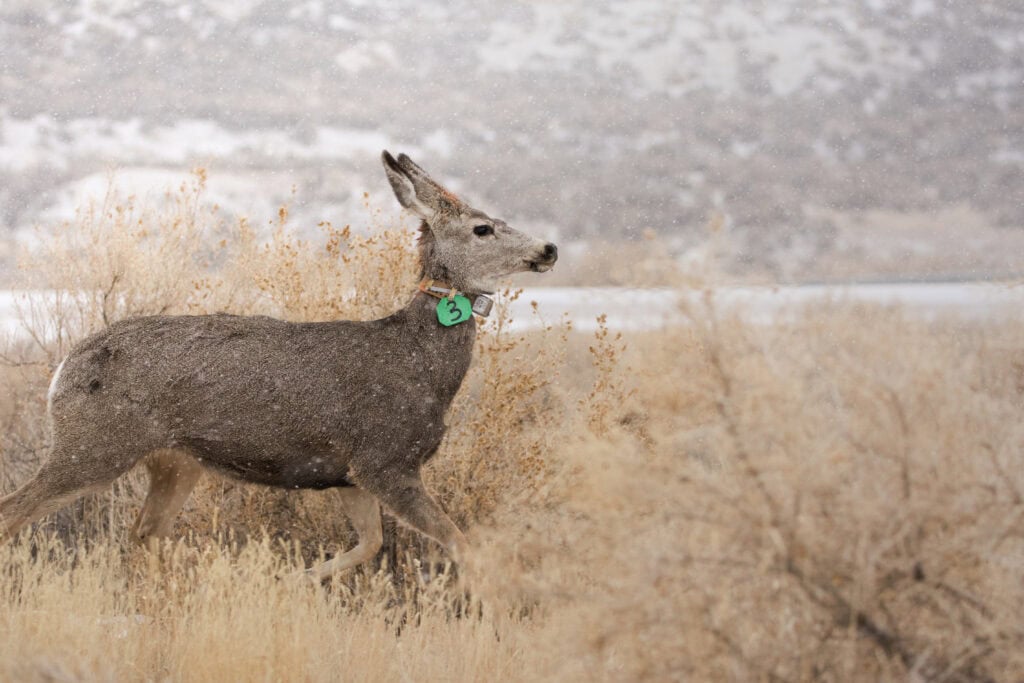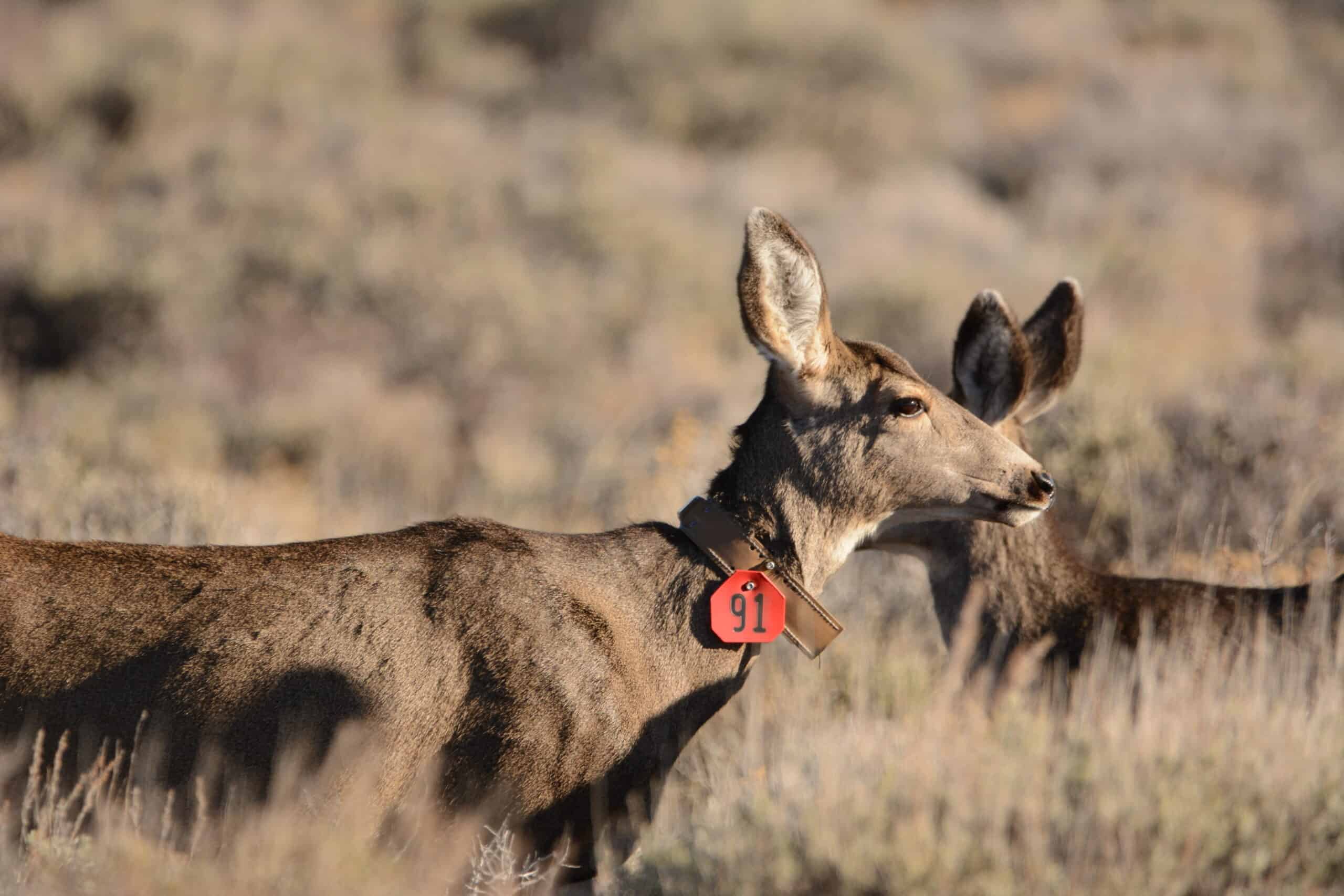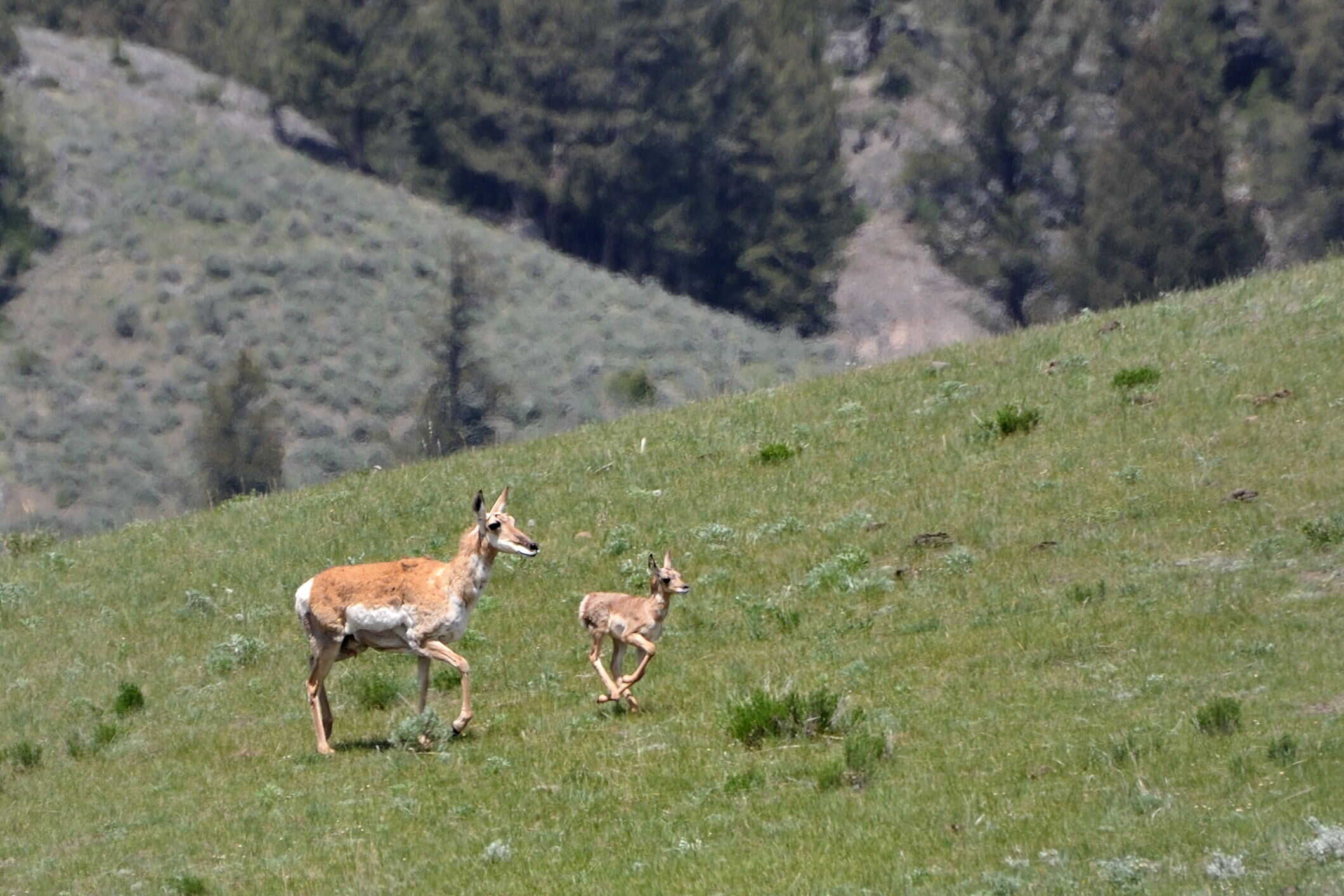Share this article
Wildlife Featured in this article
- Mule deer
CWD affects movement, behavior of deer
Researchers can track patterns to identify infected deer on the landscape
Researchers are tracking the movement and behavior of deer infected with chronic wasting disease to try to predict outbreaks.
“Our results suggest that CWD-infected deer may be shedding prions near streams during clinical stages of disease, which underscores riparian zones as potential hotspots for environmental contamination and thus indirect transmission of CWD, at least in our study area,” said Gabriel Barrile, a senior research scientist in ecology at the University of Wyoming.
Barrile and his colleagues had thought that since chronic wasting disease is neurological, it could affect the way that deer use their habitat. But it’s tough to conduct research on animals with CWD since it is rarely known if they are infected prior to death from the disease.
So, for a study published recently in Ecology and Evolution, Barrile and his colleagues had to work backwards with a long-term tracking study using GPS collars on mule deer (Odocoileus hemionus) in central Wyoming.
From 2018 to 2022, scientists collared 179 adult female mule deer. The researchers conducting this study necropsied 91 deer that died over this period to determine the cause of death.
Their results revealed that 32 of the dead deer—about a third—died from CWD. The prion disease and predation were the leading causes of death, though there was overlap between these two categories—some deer with CWD had also been preyed on.
Barrile and his colleagues went back to the GPS location data to compare the movement of CWD-infected deer with all of the others they had tracked. The tracking data revealed a distinct pattern that made CWD-infected deer detectable just based on those animals’ movement about four to six months before they died.
“Certainly, there is a signature,” Barrile said. “Deer infected with CWD moved differently than deer without it, at least in the final months before death.”

These infected deer begin to slow down and may naturally move downhill as a path of least resistance. That’s causing them to end up along lower elevations.
While the direct reason for these behavior shifts isn’t clear, it likely has to do with the deterioration of their brains.
“Maybe because if you’re walking aimlessly, you end up downhill,” Barrile said. “Because they are deteriorating neurologically, they are perhaps not behaving like deer anymore.”
In the wild, sometimes researchers confuse deer infected with CWD with uninfected deer that suffer from starvation. But the GPS data revealed some differences in the movement of these two categories. Starving, uninfected deer, for example, will often try to move toward areas with plentiful food resources. whereas infected deer move more randomly. Using this GPS tracking technique can give better clarity on the infection rates of deer populations versus just starvation.
Barrile said that this study is just preliminary. Moving forward, Barrile and other researchers want to see whether further data reveals that predation, which in this area mostly comes from mountain lions (Puma concolor), can act as a natural control for CWD—if infected deer get eaten at a higher rate, for example.
They can also expand this knowledge to larger data sets in other parts of the country. “Now that we know there are differences in movements, can we incorporate larger data sets across the country and look at how animals might be infected in that area?” Barrile said.
“Knowing the movement patterns of infected deer helps to identify likely hotspots for direct and/or indirect transmission of CWD, assuming susceptible animals also use such habitats. Managers could then target mitigation in these areas.”
Header Image: Mule deer were tracked throughout central Wyoming. Credit: Ashley Townsend








